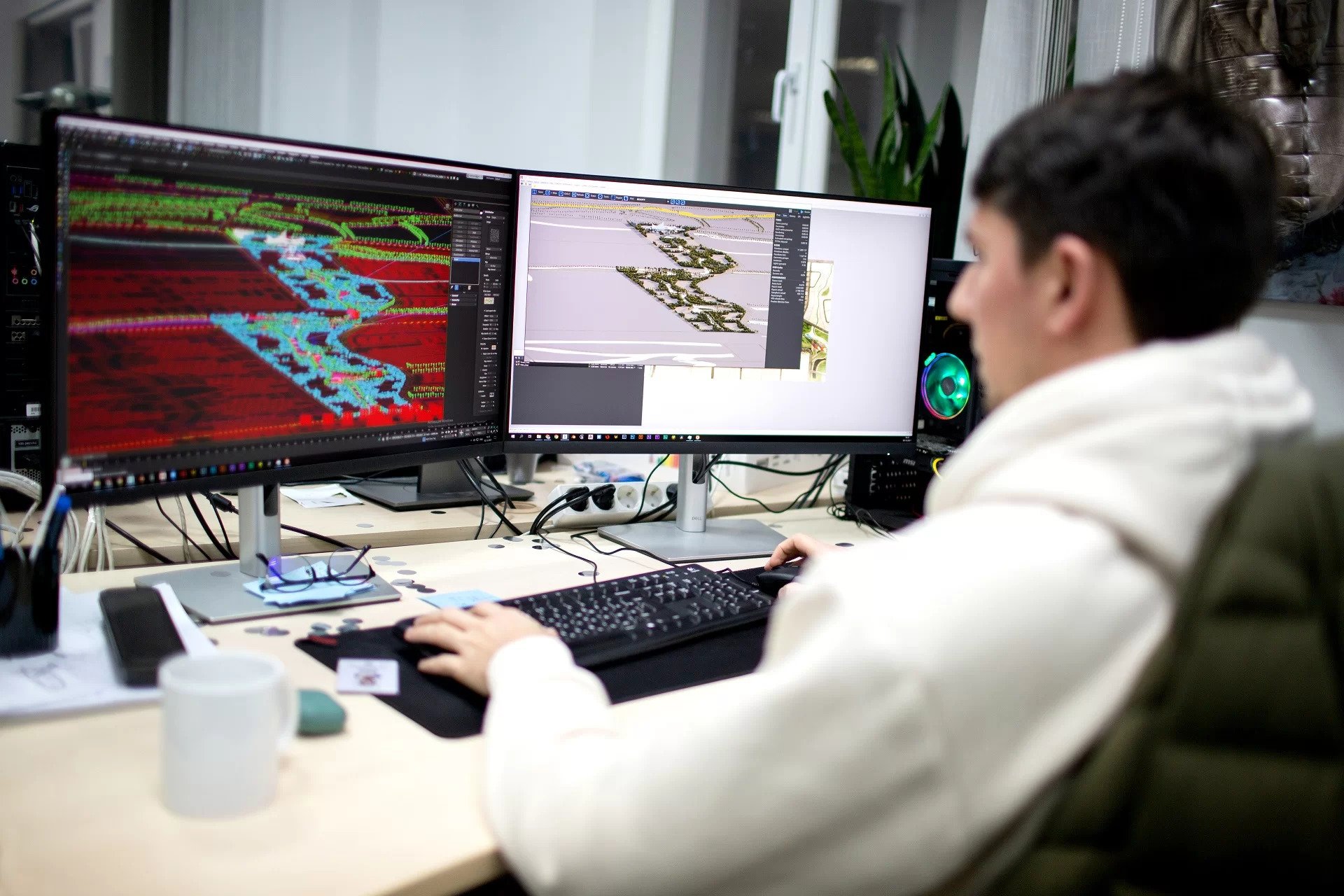Given the demands of a highly creative and complicated profession, the work-life balance of an architect is hard to achieve. Often, it ends up being more of a work-and-more-work balance. Architects are known for their long working hours and “it should have been done by yesterday” deadlines.
Needless to say, in a long-term perspective, a poor work-life balance paves the way to burnout. And if you’re reading this article, there’s a chance you’re already starting to feel the strain. The good news is, there’re various strategies that architects can use to maintain a healthier work-life balance.
As a 3D architectural visualization studio, we know all too well the highs and lows of architects’ professional life. Our goal is to make their work easier where we can. So, we did some research and gathered the best tips on how to keep the work-life balance of an architect. Without further ado, let’s dive in!
#1. Work Remotely When Possible

In the last couple of years, COVID-19 changed the attitude towards remote work drastically – and we dare to say, for the better. Fewer and fewer bosses insist on daily obligatory office attendance, and more and more technological tools are available to make the remote workflow smooth and efficient. And it’s reasonable for any architect to take advantage of this trend.
Working remotely can help architects to manage their time better and avoid long commutes that eat into their personal time. Doing so can result in increased productivity and job satisfaction. Remote work also provides an architect with the opportunity to create a workplace that suits their personal preferences. That can be highly beneficial for their mental health and well-being.
#2. Create and Follow a Diligent Schedule

Another effective tip for achieving a work-life balance of an architect is to develop a schedule and stick to it. It’s wise to allocate specific times for work-related activities. This way, architects can ensure to have adequate time to complete tasks, meet deadlines, and avoid overworking.
Also, an architect should schedule time for their personal needs: bonding with family and friends, exercising, or doing hobbies. Only by adhering to a well-ordered schedule can a busy professional achieve a sense of balance between their work and personal life.
#3. Set Clear, Gradual, and Achievable Goals

Slow and steady wins the race. Of course, there are cases when an architect might need to run a sprint and focus all their resources to get the job done. However, such cases should be an exception, not the rule. And the fewer of them, the better. It’s best to leave pre-deadline all-nighters to your student years and learn how to pace yourself.
Doing that is simpler once you set clear and realistic goals. It is an optimal way to boost the work-life balance of an architect. Ideally, architects should establish a set of goals they want to achieve and break them down into smaller, specific steps to avoid overwhelming themselves.
Even if an architect is not a big fan of gamification in task management, it’s still worth trying to divide the work into bite-sized, clearly defined tasks, and reward themselves for accomplishing them. This way, it’s much easier to stay motivated and feel a sense of accomplishment, which can help greatly in maintaining a healthy work-life balance.
#4. Delegate Tedious Parts of Work

Delegating monotonous tasks is another useful tip to achieve a work-life balance of an architect. For example, some of the simple, routine processes can be delegated to interns. Outsourcing architectural visualization or drafting services to a specialized studio is also a great way to clear up one’s schedule. This way, an architect can focus more on creative parts of their work and, who knows, maybe even get some free time.
#5. Pick up Healthy Habits

Leading a healthier lifestyle is another critical component of maintaining a work-life balance. To take care of their physical and mental health, an architect should incorporate healthy habits into their daily routines. These can include regular exercising, healthy eating, getting enough sleep (yes, no way around that), and taking breaks throughout the day to recharge. Taking a walk around the house or neighborhood, playing with a pet, or just stretching a bit can go a long way in ensuring an architect is not completely exhausted by the end of the day.
#6. Set Strict Limits and Boundaries

Being able to set boundaries is also crucial for maintaining the work-life balance of an architect. There should be a clear divide between work and personal life, and an architect should communicate it delicately but firmly to their colleagues, clients, and family members. That can include setting specific work hours, avoiding work-related communications during off hours, and prioritizing personal life when necessary.
What’s more, one must learn to say no. Even emerging specialists should value their time, skills, and efforts, and avoid working for underpaying clients. And if an architect is an established professional, they should definitely learn to pick their projects and refuse commitments that do not align with their priorities or that will overload their workdays. Saying no can help architects tremendously in avoiding burnout and maintaining overall balance.
#7. Have Hobbies Unrelated to Work

This advice is often quite tricky to follow for creative professionals. Still, it’s a necessary one. Having hobbies outside of your professional interests is often essential for maintaining a healthy work-life balance. Architects can try out such activities as playing sports, learning a new language, traveling, or doing some kind of craft. These can help to relax, unwind, and recharge after a long day of work. Engaging in hobbies like that can give architecture experts more energy and thus ultimately enhance their work productivity.
Present your architectural project like a work of art with AI-powered CGI
Maintaining a work-life balance of an architect can be challenging for both aspiring and well-established professionals. Still, even a dedicated workaholic should have enough personal time, set clear boundaries with colleagues and clients, and care about their physical and mental health. That will ensure an architect neither fails in their performance nor, even worse, loses the spark at all.
Looking for architecture rendering services to lighten up your workload? Drop us a line and get top-notch 3D visuals for a reasonable price!

Stacey Mur
Content Writer, Copywriter
Stacey is a content writer and a CG artist. Outside of work, Stacey enjoys musicals, Star Wars, and art talk. A proud Corgi parent.


